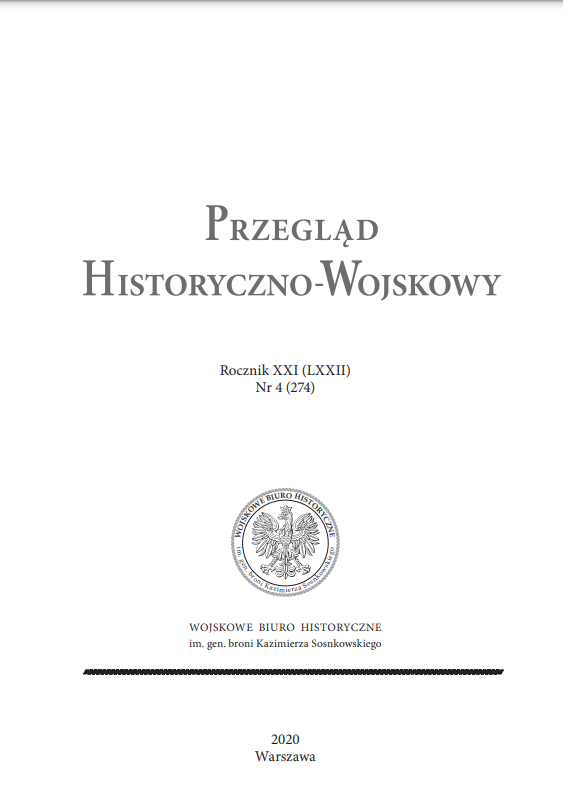Rejestr dworzan konnych Zygmunta I Starego wysłanych do walki z Krzyżakami pustoszącymi Mazowsze na przełomie lipca i sierpnia 1520 roku
A Register of Sigismund I the Old’s Mounted Courtiers sent to Fight with the Teutonic Knights in Mazovia in the in Late July and Early August of 1520
Author(s): Andrzej GładyszSubject(s): Politics / Political Sciences, History, Military history, Modern Age, 16th Century
Published by: Wojskowe Biuro Historyczne im. gen. broni Kazimierza Sosnkowskiego
Keywords: mounted courtiers;Sigismund I the Old;Prussian war;banner;retinue
Summary/Abstract: The mounted courtiers of Sigismund I the Old, in addition to their representative function, were a small, trained reserve formation remaining permanently at the side of the king, who could issue them an order at any time. During the so-called Prussian war of 1519–1521, the size of this group reached its peak in the summer of 1520 in Toruń (539 horses in 121 court detachments – pocztach dworskich). During the fights with the Teutonic Knights, the courtiers were constantly responsible for the safety of the monarch in his place of residence, but smaller groups took part in military actions. The analysis of a short fragment of source material included in the manuscript no. 49 (Main Archive of Old Files, Crown Treasury Archive, Section 1: Royal Accounts) allowed to make a detailed description of a small banner, consisting of 69 horses in 15 retinues, taking part in the fight against the Teutonic Knights’ plundering raids to northern Mazovia at the turn of July and August 1520. The composition of the unit and the nature and size of the retinues were discussed, as well as the issue of commanding the group, the costs incurred for its action and, based on Marian Biskup’s research, the battle route was presented. The presented example can be taken as a starting point for a discussion on the military organization of the court. It can be assumed that the king or the marshal, as the court’s superior, would decide which of the individual retinues of mounted courtiers would form one or more court banners that functioned simultaneously and independently. Their number and composition were probably determined by the tasks envisaged for the units.
Journal: Przegląd Historyczno-Wojskowy
- Issue Year: XXI/2020
- Issue No: 4
- Page Range: 172-190
- Page Count: 19
- Language: Polish

